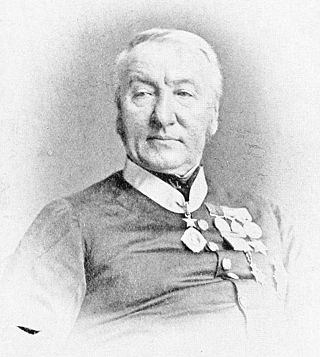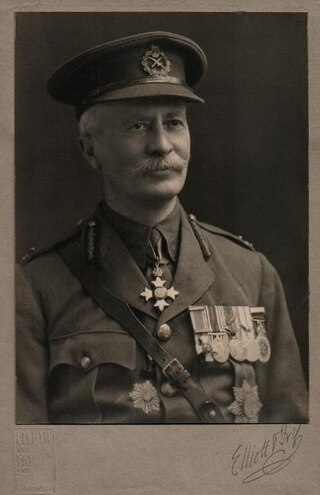Related Research Articles
Sir George Russell Clerk was a British civil servant in British India.

Major-General Sir Henry Marion Durand, was a British military officer in the Bengal Army and served as Lieutenant Governor of Punjab from 1870 until his death in 1871.

The Bengal Engineer Group (BEG) is a military engineering regiment in the Corps of Engineers of the Indian Army. The unit was originally part of the Bengal Army of the East India Company's Bengal Presidency, and subsequently part of the British Indian Army during the British Raj. The Bengal Sappers are stationed at Roorkee Cantonment in Roorkee, Uttarakhand.

The Indian Medical Service (IMS) was a military medical service in British India, which also had some civilian functions. It served during the two World Wars, and remained in existence until the independence of India in 1947. Many of its officers, who were both British and Indian, served in civilian hospitals.

The Madras Army was the army of the Presidency of Madras, one of the three presidencies of British India within the British Empire. The Madras Army was originally intended to be composed only of Rajputs, Mussalmans, and the three Telugu castes the Kammas, the Razus and the Velamas.

Major General Sir George Alexander William Leith, 2nd Baronet was the first Lieutenant-Governor of Prince of Wales' Island, replacing George Caunter, a magistrate who was acting superintendent following the resignation and departure of the last governor, Superintendent Major Forbes Ross MacDonald. Leith served in that position from his arrival in 1800 until 1804.
Charles Waddington CB was a major-general in the Bombay Engineers of the British East India Company.
Colonel Hugh Fraser, CB was a British military officer and administrator in India and Burma.

Brigadier-General William Thomas Clifford Beckett CBE DSO VD was a British railway engineer in India and a British Army officer.
Lieutenant-General Sir Charles Edward Nairne was a British military officer who served in British India.

General Sir William Erskine Baker KCB was a senior British Indian Army officer, who became Military Secretary to the India Office.

Rear-Admiral Sir Thomas Fellowes was an officer of the Royal Navy during the French Revolutionary Wars and Napoleonic Wars.

Colonel John Vaughan (1778–1830) was a senior British officer in the service of the Honourable East India Company’s Army. Through his military career he saw active service on the Fourth Anglo-Mysore War, Second Anglo-Maratha War and Third Anglo-Maratha War.
Major General Henry Despard was a British Army officer of the 17th Regiment of Foot (1799–1838), Staff of Ireland (1838–1842) and 99th Regiment of Foot (1842–1854). He saw action in Third Anglo-Maratha War in India and, in his later years, in the Flagstaff, or Northern, War in New Zealand. In 1845 he commanded British troops in a disastrous assault on the Māori pā at Ōhaeawai.

Colonel Thomas Tupper Carter-Campbell of Possil was a British soldier.

General Sir John Cheape was a Scottish military officer of the Bengal Army in British India.

The 1838 Coronation Honours were appointments by Queen Victoria to various orders and honours on the occasion of her coronation on 28 June 1838. The honours were published in The London Gazette on 20 July and 24 July 1838.

Major-General William Wilberforce Harris Greathed was a British senior officer in the Bengal Engineers.
General Sir Alexander Lindsay KCB was an officer in both the British and East India Company armies. Commissioned into the British Army at the age of nine, he was placed on half-pay after the 104th Regiment of Foot was disbanded in 1795.

William Mayne, (1818–1855) was an English army officer in the service of the East India Company who made his name in the defence of Jellalabad during the First Afghan War. He reached the rank of colonel in the Bengal Army, and served briefly as brigadier of the Hyderabad contingent.
References
- 1 2 Vibart, H.M. (1894). Addiscombe: its heroes and men of note. Westminster: Archibald Constable. p. 99
- 1 2 "Auction of medal". Bonhams.